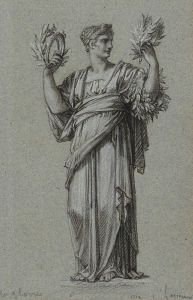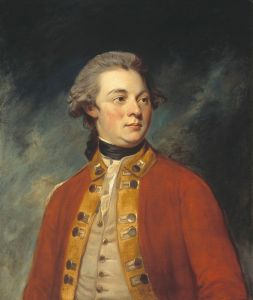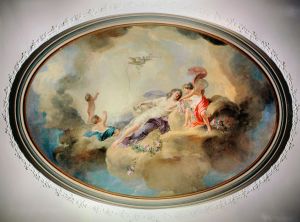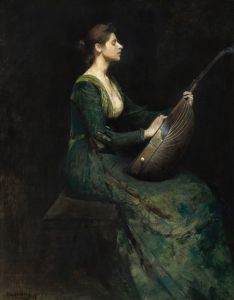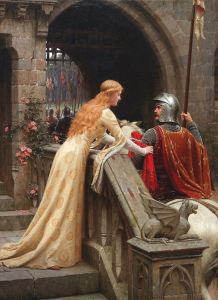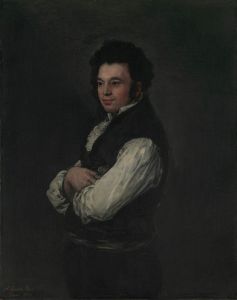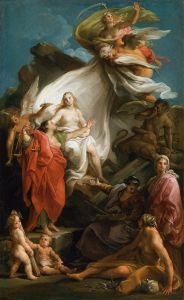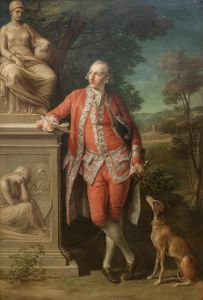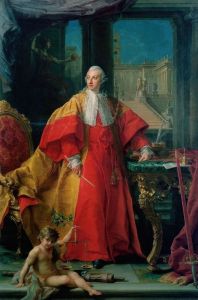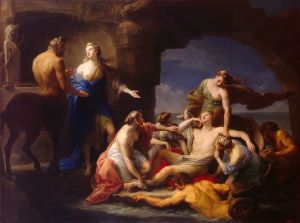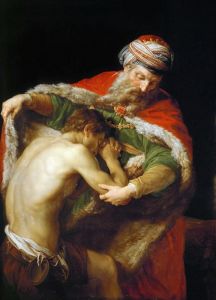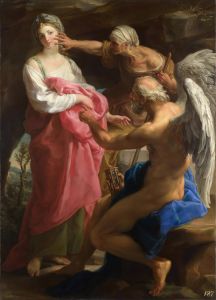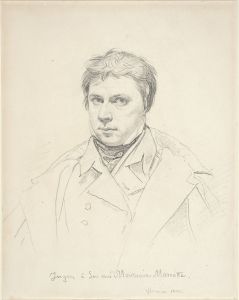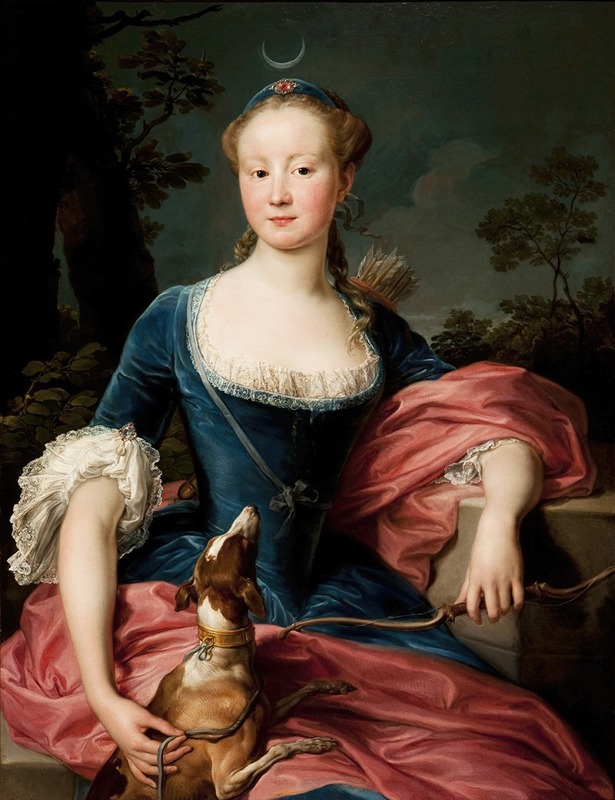
Portrait of a Lady as Diana the Huntress
A hand-painted replica of Pompeo Batoni’s masterpiece Portrait of a Lady as Diana the Huntress, meticulously crafted by professional artists to capture the true essence of the original. Each piece is created with museum-quality canvas and rare mineral pigments, carefully painted by experienced artists with delicate brushstrokes and rich, layered colors to perfectly recreate the texture of the original artwork. Unlike machine-printed reproductions, this hand-painted version brings the painting to life, infused with the artist’s emotions and skill in every stroke. Whether for personal collection or home decoration, it instantly elevates the artistic atmosphere of any space.
"Portrait of a Lady as Diana the Huntress" is a painting by the renowned Italian artist Pompeo Batoni, created in the 18th century. Batoni, born in 1708 in Lucca, Italy, was a prominent painter known for his skillful portraits and historical paintings. He became one of the most sought-after artists in Rome, attracting patrons from across Europe, including nobility and members of the clergy.
This particular painting exemplifies Batoni's ability to blend portraiture with mythological themes, a popular trend among artists of the Rococo period. The artwork depicts an unidentified noblewoman in the guise of Diana, the Roman goddess of the hunt, the moon, and nature. Diana was often portrayed as a symbol of chastity and independence, and her iconography typically includes a bow and arrows, a crescent moon, and sometimes a hunting dog or stag.
In "Portrait of a Lady as Diana the Huntress," Batoni captures the elegance and poise of the sitter, who is adorned in a classical costume that reflects the goddess's attributes. The lady is depicted with a bow in hand, and her attire is reminiscent of ancient Roman garments, emphasizing the classical revival that was fashionable during the period. The background of the painting is often characterized by a natural setting, aligning with Diana's association with the wilderness and the hunt.
Batoni's work is noted for its meticulous attention to detail, vibrant color palette, and the graceful rendering of textures, such as the sheen of silk fabrics and the softness of skin. His portraits often convey a sense of grandeur and sophistication, qualities that appealed to his aristocratic clientele. The artist's ability to infuse his subjects with both realism and idealization made his portraits particularly admired.
The painting is a testament to Batoni's skill in merging the sitter's likeness with allegorical elements, creating a work that is both a personal portrait and a representation of mythological narrative. This duality was appealing to patrons who wished to be immortalized not only in their own likeness but also as figures of classical antiquity, embodying virtues and ideals associated with those figures.
While the identity of the lady in the portrait remains unknown, the painting reflects the broader cultural and artistic trends of the 18th century, where the blending of personal identity with classical mythology was a popular motif. Batoni's work, including this painting, played a significant role in the development of portraiture during this period, influencing both his contemporaries and later generations of artists.
"Portrait of a Lady as Diana the Huntress" is an exemplary piece that showcases Pompeo Batoni's mastery in combining portraiture with classical themes, capturing the essence of the Rococo era's fascination with antiquity and the idealization of its subjects. The painting remains a significant work within Batoni's oeuvre and continues to be appreciated for its artistic and historical value.





